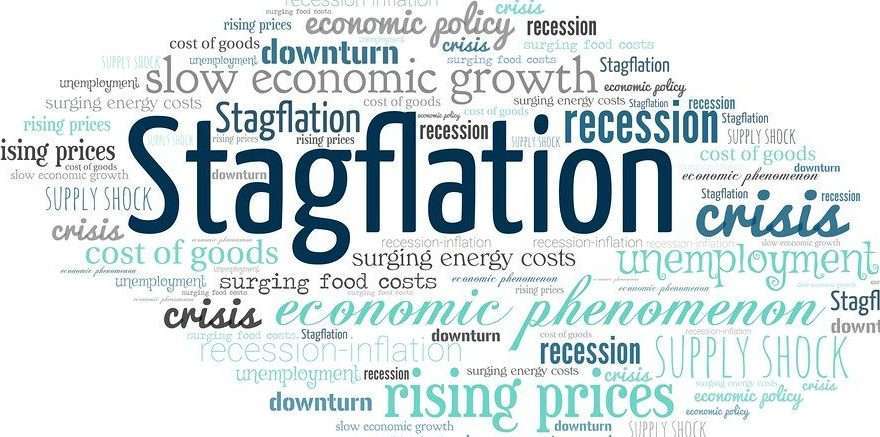“Stagflation a double whammy for the Economy”

Theme: World Bank’s President David Malpass warned about Stagflation in upcoming times. The term emerged during the 1973-1975 recession. What is Stagflation: Stagflation is an economic condition where there is a high rate of unemployment along with rising inflation and slow growth in the economy. It occurs when there is a simultaneous appearance of all these three aspects in an economy. Inflation drives prices up but purchasing power down, as spending the same amount of money gets you less value as prices go up. Which means economic growth has slowed dramatically or ground to a halt, with high unemployment, a drop in the Gross Domestic Product (GDP), slumping wages, and other factors. Stagflation = High unemployment + Inflation + Economic slowdown Causes of Stagflation: Example:- Disruption in the oil supply or a shortage of essential parts, which recently occurred during the Covid-19 pandemic with a disruption in the flow of semiconductors that slowed the production of everything from laptops to cars and appliances, etc. worldwide. – Inflation – Unemployment – Economic Growth Stagflation vs Inflation: Example of Stagflation: It is expensive and challenging to end from a social and financial perspective. History has only a handful of instances of this. The most significant one took place in the United States in the 1970s. The arrival of economic stagnation in the 1970s was blamed on the US Federal Reserve’s unsustainable economic policy during the boom years of the late 1950s and 1960s. In the 1960s, the Fed took action to maintain low unemployment and increase overall demand for goods and services. However, the decade’s very low unemployment rate resulted in what is known as a wage-price spiral. The 1973 OPEC oil embargo also contributed to the unfavorable economic occurrence in the United States. The country’s industries were harmed by extremely high oil costs and shortages. New lows in demand resulted in decreased industrial output. Cure for stagflation: Conclusion: Growth is being negatively impacted by the conflict in Ukraine, China’s curfews, and supply-chain problems, as a result of stagflation which makes it difficult for businesses to operate. Earnings and expenses are both rising. Meanwhile, slow or declining economic development and high unemployment may lead sales to stagnate or fall.It allows management to carefully assess their business and make changes to strengthen it. Productivity can be increased by businesses using time and money-saving technology. They may reconsider their pricing strategy, consider acquiring or merging with competitors, and bolster their balance sheet. Companies that take such measures to survive stagflation may find themselves in a strong position for growth when the economy improves. Read more: https://www.economicshelp.org/blog/glossary/stagflation/ Also read: https://hirednex.com/rise-of-gig-economy-pros-cons-and-future/
Recession and its impacts

Theme: It is expected that the world will slip into recession in 2023. Several countries are already on the brink of recession. For example, UK GDP contracted and Bank of America’s strategists said the US could fall into a recession in the first quarter of 2023. According to its survey, it was found that 91% of CEOs of top companies expect a recession in 2023. What is a Recession ? Recession can be defined as extended periods of production decline that affect a large portion of the economy. Recessions often start when a significant decline in consumer expenditure across an economy occurs. When not managed carefully and promptly, it may often be catastrophic for an economy since it may result in an economic depression. The present situation: Cause of the present situation: Impact of a possible recession on the world: India’s situation: Conclusion: Recession is a natural phenomenon in the economic cycle where the demand reaches a peak and starts to decline. Recessions have plenty of negative consequences, but with proactive measures from the government, their effects can be reduced and made into a mild recession to prevent severe negative outcomes. Many major countries will likely experience a recession in 2023. Also Read: India’s E-commerce Policy – Impact on the E-commerce Industry Also Read: Green economy What’s your take on the recession? Express your point of view through the comment section below. And subscribe to our blog to read answers to the trending GD topics.
